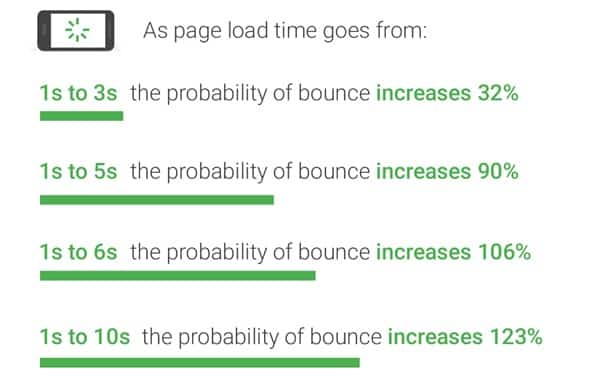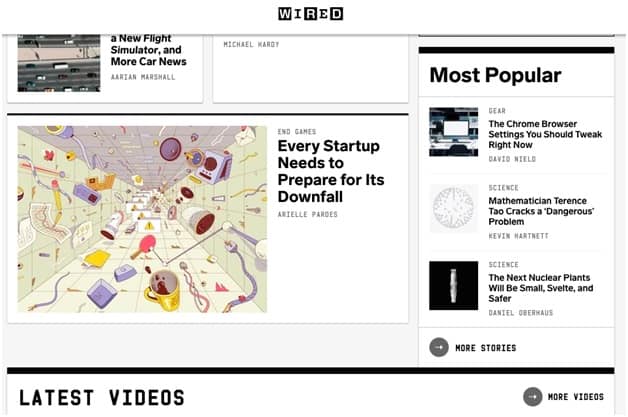
21 Dec 4 Tips to Reduce Bounce Rate for Your WordPress Site
There’s a myriad of metrics that you should watch closely when analyzing the performance of your WordPress website, but the bounce rate is one that really stands out.
Simply explained, the bounce rate is the percentage of visitors who land on a website and then leave almost immediately, thus never going to other pages. That’s important.
There are three performance categories when it comes to measuring the bounce rate of a website. If we leave all of the technicalities aside, we can name them the good, the average, and the ugly.
- Anything between 0% (which never happens, of course) and 30% is considered good (kind of)
- The rate that tips over 30% and reaches 50% is average (most of the Internet sites out there fall into this category)
- Anything more than 50% is simply ugly and calls for desperate measures (this means that the overwhelming majority of people visiting your website leave almost immediately after landing there).
The bounce rate depends on a wide range of factors, including the industry, content, loading speed, and even design, and it’s your job to ensure that they don’t affect the visitors’ decision to browse your WordPress site. The bounce rate could be measured everywhere even at school, at university, for example the essay’s and assignment’s bounce rate. To improve the situation and to achieve better results in essay writing, – check entertainment essays – there are examples that will be helpful for you in writing your own masterpieces.
Below, you’ll find a checklist for evaluating if you can reduce your website’s bounce rate.
- Website Performance: Improve Speed
First things first, you should teach your website to be a highly skilled sprinter. By that, I mean that it must be able to load within a few seconds, and this is important for two reasons.
Reason #1: people don’t appreciate slow websites. What’s more, most of them are prepared to leave if a website doesn’t load within 3 seconds.
In fact, here’s what Google found on that.

Credit: Think with Google
Reason #2: Google’s requirements. The so-called Speed update released by the search giant aims to improve the speed of the web and encourage website owners to deliver better experiences to Google users. In return, they say that fast websites will not be affected by the new standard of speed that might reduce a website’s position in search results.
To cut a long story short, maximizing your website’s speed is in your best interest. While you can test the current speed with Google’s own PageSpeed Insights, take a look at 7+ Best Plugins to Speed Up Your WordPress Site.
- Don’t Create Content Only for the Sake of Being Active
Many people make a mistake by thinking that Google will rank their website simply because they publish tons of content regularly. While regular content production is good, it doesn’t necessarily mean that the website’s ranking will improve.
Whatever people are saying about Google, it’s first and foremost user-oriented. This means that it cares a lot about the usefulness and relevance of the content websites publish, so it imposes a range of requirements. If content doesn’t meet these requirements, it won’t rank high. And it doesn’t matter how many articles or videos a website publishes.
In fact, here’s what Google has to say about this in its official content guidelines.

Credit: Google
So, to reduce the bounce rate caused by people leaving because of poor content, consider the following:
- Make sure that content has value for your target audience. To know what’s relevant, you need to research the interests and needs of the people who are likely to land on your website
- Make content as accurate and specific as possible. People won’t spend hours looking for answers in your content if they’re not easily accessible
- Use Google Keyword Planner to discover how people look for content like yours. As mentioned in the above image, textual content should contain keywords that people use to find your pages
- Don’t make silly mistakes. “Even one spelling mistake can ruin the first impression of your website and make a visitor leave,” says Ewa Slatter, an editor at Best Essay Education. “Content errors can undermine ranking, as you want Google to believe that the information on your website is accurate.”
So, instead of focusing on quantity, make sure to invest a lot in the quality of your content – articles, videos, page copies, etc. – to provide that much-needed value for visitors.
- Make People Stay Longer with Related Posts and an Interactive Sidebar
Once you’ve got visitors to read your content and realize how awesome it is, your job is to make them stay longer. WordPress can help with doing this with an interactive sidebar and related or most popular posts.
First, the sidebar.
There are many great WordPress sidebar widgets out there, and they help with engaging visitors by displaying content that’s relevant to that on a given page. For example, a sidebar relevant to an article about email marketing would contain posts on how to write welcome emails for eCommerce businesses.
By having a sidebar showing content that could be interesting to the content that a visitor is reading, you’re increasing a chance that he or she will click on other articles and thus stay longer.
Once again, though, this is where the quality and relevance of content play a deciding role, as no one would want to read something that’s either irrelevant or unrelated.
Second, related and most popular posts.
As someone who uses WordPress, you don’t need any introduction of what related and most popular posts plugins are, but what you need to know is that they can increase user engagement.
The selection of related posts plugins is pretty decent now, and you should definitely have one to display more great content to your visitors. This applies to “most popular” plugins, too.
For example, here’s how Wired.com, a popular online magazine and a prominent WordPress user, displays most popular posts.

Source: Screenshot, Wired.com
If your WordPress theme doesn’t support related or most popular posts, make sure to download one. You simply can’t afford to pass up such a great opportunity to engage your visitors and reduce the bounce rate. Make sure that your readers can share the posts on social media, as it’s a great tool to increase awareness of your brand.
Don’t forget to link to other pages in your content, too, but ensures that the links are relevant to the post.
- Invest in Creation of Quality Visuals
Even though visuals – images, screenshots, infographics, etc. – may seem as non-critical content types, they may play a huge role in increasing the dwell time (this is the time that a visitor spends on your website).
This is supported by the results of numerous content studies. One of the most comprehensive ones was conducted by Buzzsumo and OkDork, and it concluded that having at least one visual in a blog post generated more social media shares.
As you can see in their study, more people were willing to share posts containing at least one image, which is a strong indicator of visuals being important for engagement (64.9 shares for articles with images vs 28 shares for articles without images).
That’s why you should always invest in the creation of visual elements. Mixing them with bodies of text is a nice way to make content more engaging, clear, and understandable. The explanation for why visuals are so powerful in increasing reader/viewer/customer engagement is the fact that 65 percent of us are visuals learners. This means that many of us learn and remember best through visual communication.
There are lots of ridiculously simple tools for the creation of visuals – Canva is a great example – so making visuals shouldn’t be a problem.
Summary
A successful strategy to minimize the bounce rate is visitor-centered, and all tips that you’ve just read about fall into this category. Focus on what Google – that also means its users – requires from your WordPress website and how people can benefit from visiting it. If your website loads quickly and has quality, visitor-centered content, chances are that your bounce rate will gradually go down.
The ball is pretty much in your court now, so hopefully, now you know how to reduce the bounce rate significantly.
–
ABOUT THE AUTHOR
Angela Baker is an experienced blogger and editor from WowGrade who’s on the mission to help small businesses and bloggers benefit from content marketing. She says that creation of quality content can help to build authority and create loyalty and trust, so she is now working on a guide on starting a blog for business. Angela also works as a freelance editor at PicktheWriter where she shares content editing and storytelling.



No Comments